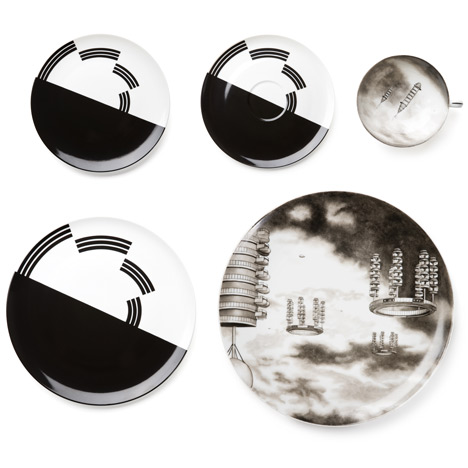
Flying City Tableware by Carsten Höller for Nymphenburg
Belgian artist Carsten Höller has created a set of tableware for Porcelain manufacturer Nymphenburg, depicting the iconic Flying City project by the late Russian architect Georgy Krutikov.
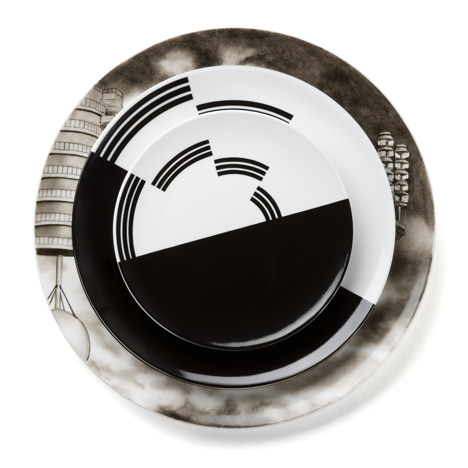
Called Flying City Tableware, the collection also features the design from 19th Century invention the Benham Top, a spinning top painted in a black and white design that causes the viewer to perceive colours while it's spinning.
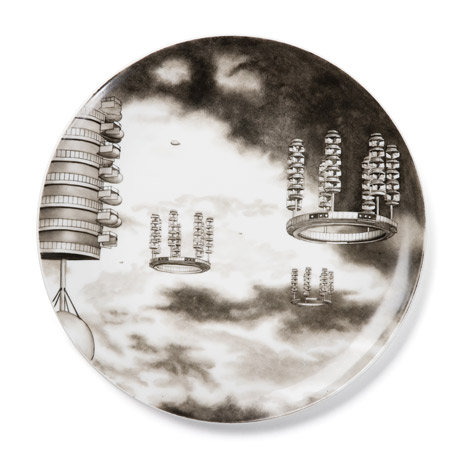
The collection is on display in Rotterdam as part of a mechanical installation that turns the plates.
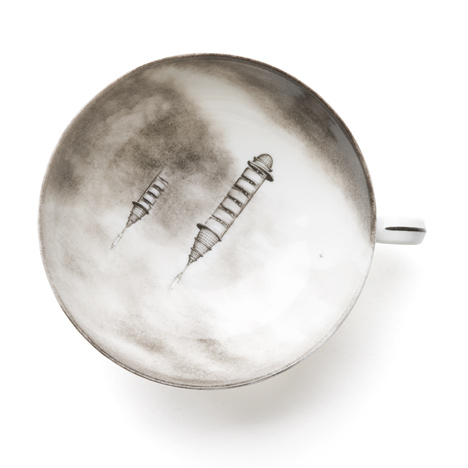
The collection comprises three plates, a tea cup and saucer.
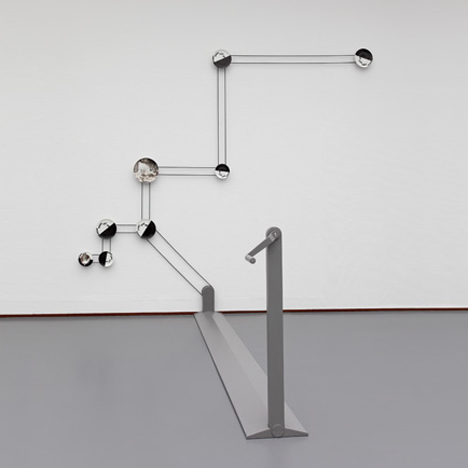
Here's some more information from Nymphenburg:
FLYING CITY TABLEWARE
Carsten Höller for Porzellan Manufaktur Nymphenburg
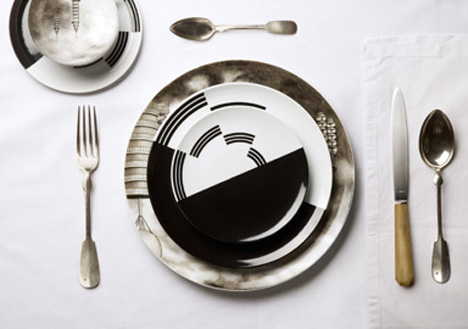
Artist Carsten Höller has devised an edition for Porzellan Manufaktur Nymphenburg. He has established the starting point for a series of editions that will continue in the near future, with artists such as Tobias Rehberger, winner of the Golden Lion at the 2009 Venice Biennale, and Joep van Lieshout.
At the core of his work, which Carsten Höller has presented hitherto at the Tate Modern, London, at the Kunsthaus Bregenz, and in the Guggenheim Museum, New York, amongst others, is the perpetual question of the conventions that govern the way we lead our lives and whether indeed it is possible to imagine things in a fundamentally different way. In developing the FLYING CITY TABLEWARE (2010) for the Porzellan Manufaktur Nymphenburg, Carsten Höller has devised an edition that takes up this theme in a new way.
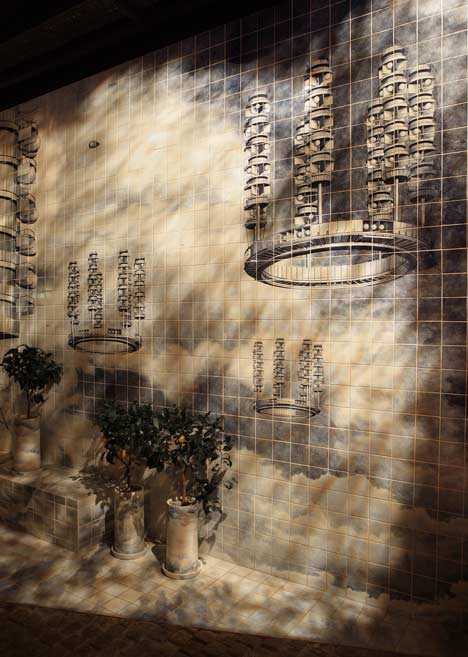
The tableware comprises a combination of a service plate, a dinner plate, a side plate, and a teacup and saucer, each decorated with a design relating to two fundamentally different sources: on the one hand, Georgy Krutikov's design for a FLYING CITY (1928) and, on the other, the rotating Benham top or disc (1894-95), eponymously named after its inventor, Charles Benham. Höller chose Wolfgang von Wersin's LOTOS Service (1932) upon which to present the motif - tableware that belongs to the classical Nymphenburg services of the New Sobriety and reflects, in its elegant simplicity, the functional aesthetics of the avant-garde period.
Carsten Höller has already used both motifs in earlier works: the Benhamesque stripes in MASONWHEEL (2001) and latterly Krutikow's visualworlds in THE DOUBLE CLUB (2008-09) in London. He brings bothmotifs together for the first time in the FLYING CITY TABLE WARE.
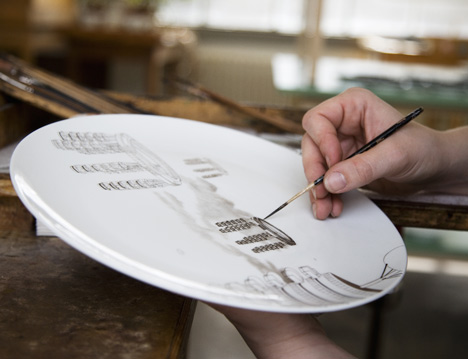
The FLYING CITY TABLEWARE is produced in two different versions. The wall installation - a unique specimen that Höller will be presenting until 25 April 2010 in Rotterdam - comprises eight hand-painted plates, each mounted on a rotating mechanism and connected to one another by a leather transmission belt. The plates can be rotated at a maximum of 600 revolutions per minute, by means of a manual crank. From about 300 revolutions, the effect discovered by Benham, whereby the black and white graphic design is perceived in colour, starts to emerge. In the installation, the dynamisation inherent in the motifs is achieved through actual mechanical motion.
At the same time, the tableware is intended for use: service plate, dinner plate, side plate, and teacup and saucer are also available in a limited edition of twenty five signed services, each designed for two people. A table centrifuge for the rotation of the Benhamesque plates also forms part of this edition.
See also:
.
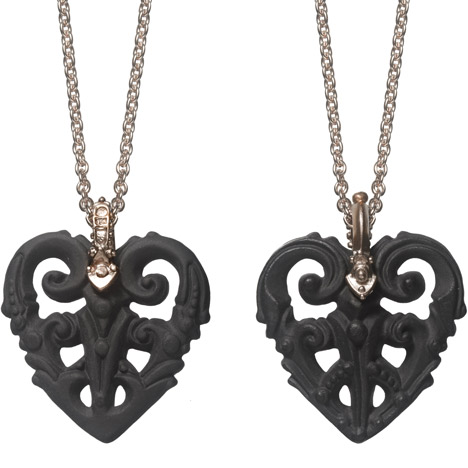 |
 |
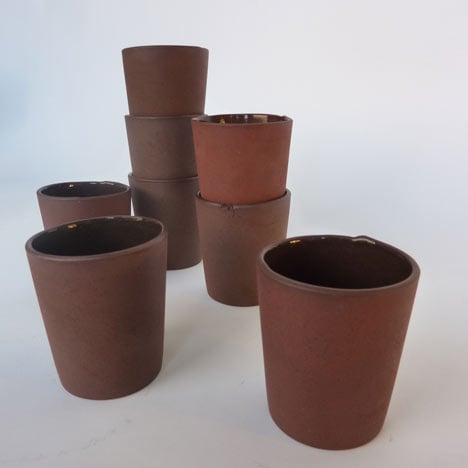 |
| Essentials II by Patrik Muff for Nymphenburg |
Commedia Dell’Arte figures by Nymphenburg | More design stories |